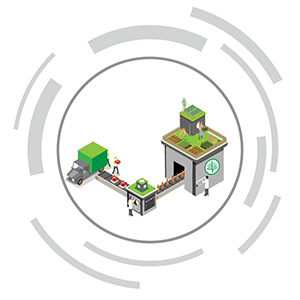
The industrial sector is a crucial economic fulcrum for a country as it holds a key role in becoming an employment generator and is also a key factor in the upgrading of an economy’s added value, which can lead to advances in decreasing the poverty rate.
Indonesia holds a unique comparative advantage, and this can help benefit industrialization efforts. With abundant natural resources, Indonesia has the potential to create greater added value from its natural resource materials. However, the development of industry based on natural resource management is currently not done optimally or effectively. The growth of Indonesia’s exports and services industries still lags behind many similar countries. Most of Indonesia’s exports are still based on commodities with limited added value potential, while the dependency on imported raw materials remain high. The involvement of the national industry in contributing effectively to the global production network is still also very minimal.
Also, the current business climate still isn’t adequate enough to lure investment to the industrial sector. The effects of the Covid-19 pandemic has also resulted in the involvement of policies on repairing the business climate and the development of competitive industry subsectors in Indonesia’s industrialization efforts. Going forward, continued industrialization efforts in Indonesia will be very dependent on the ability to create industrial subsectors that have high efficiency and productivity levels, the ability to create added value towards natural resources, develop mastery of expertise, absorb the workforce and create employment as well as be able to compete in the international market.
Key Terms
Creation of jobs, comparative advantage, industry competitiveness, exports, dependency on imports, global production network, business climate, efficiency and productivity, innovation, mastery of expertise, international competitiveness.
Key Topics
- Highlighting the best practices to create leading industrial subsectors.
- Strategies to drive a labor-intensive industrial growth amidst global competition.
- The challenges of Indonesia’s leading industrial subsectors within the global scope, and after the Covid-19 pandemic.
- Addressing the role of industrial resources (and input factor production) in driving up productivity and producing high-tech exports.
- Learning from other countries: subsector development strategies that can result in better contribution towards the Global Production Network.
- Accelerating the potential and growth of a natural resources-based industry: strategies on increasing added value, and the integration of industries downstream and upstream.
- Strategies towards strengthening industrial innovation to help improve competitiveness, including taking advantage of the pace of innovation post-Covid-19.
- Strategies on the development of a modern industrial services sector (manuservices) to improve competitiveness.

